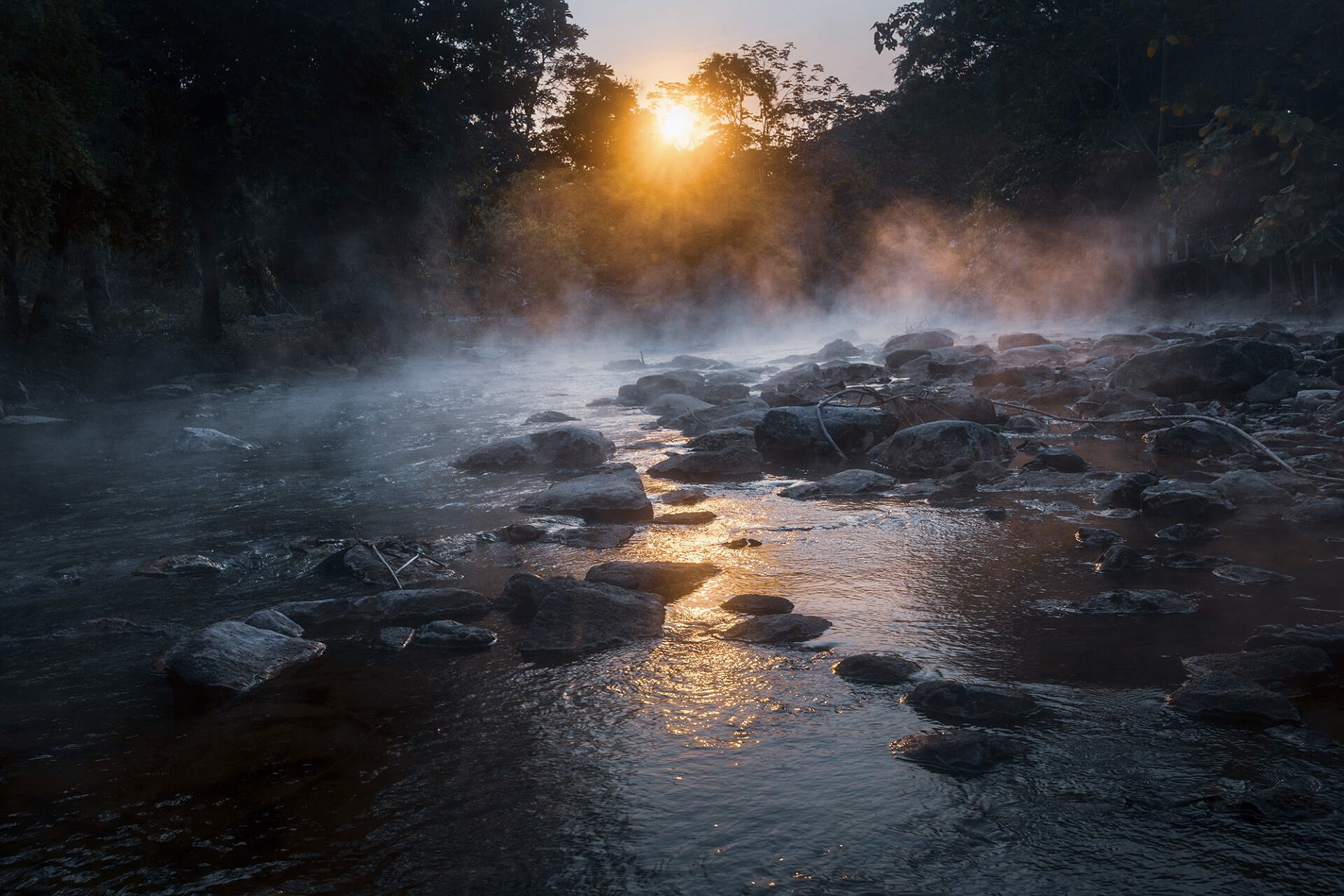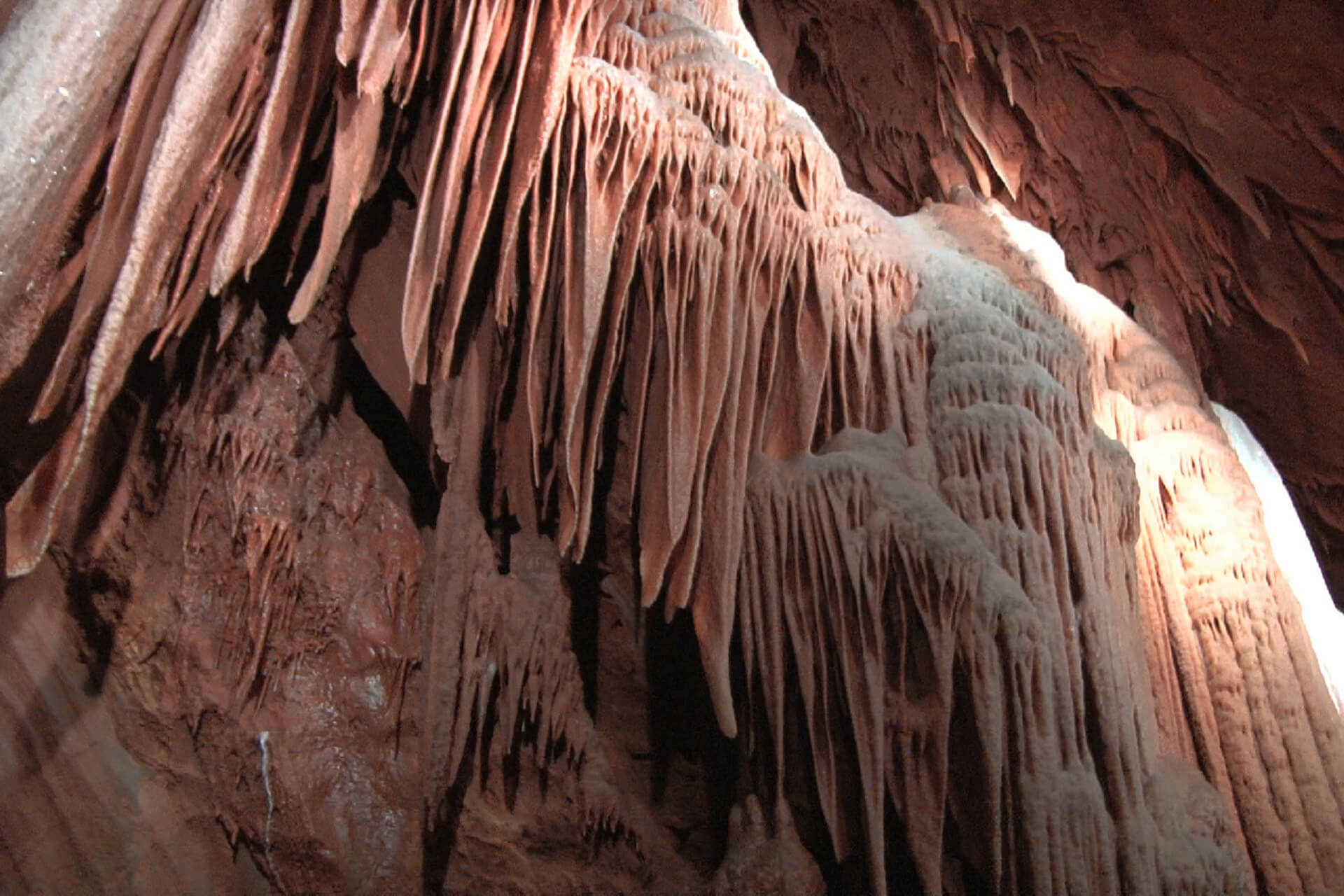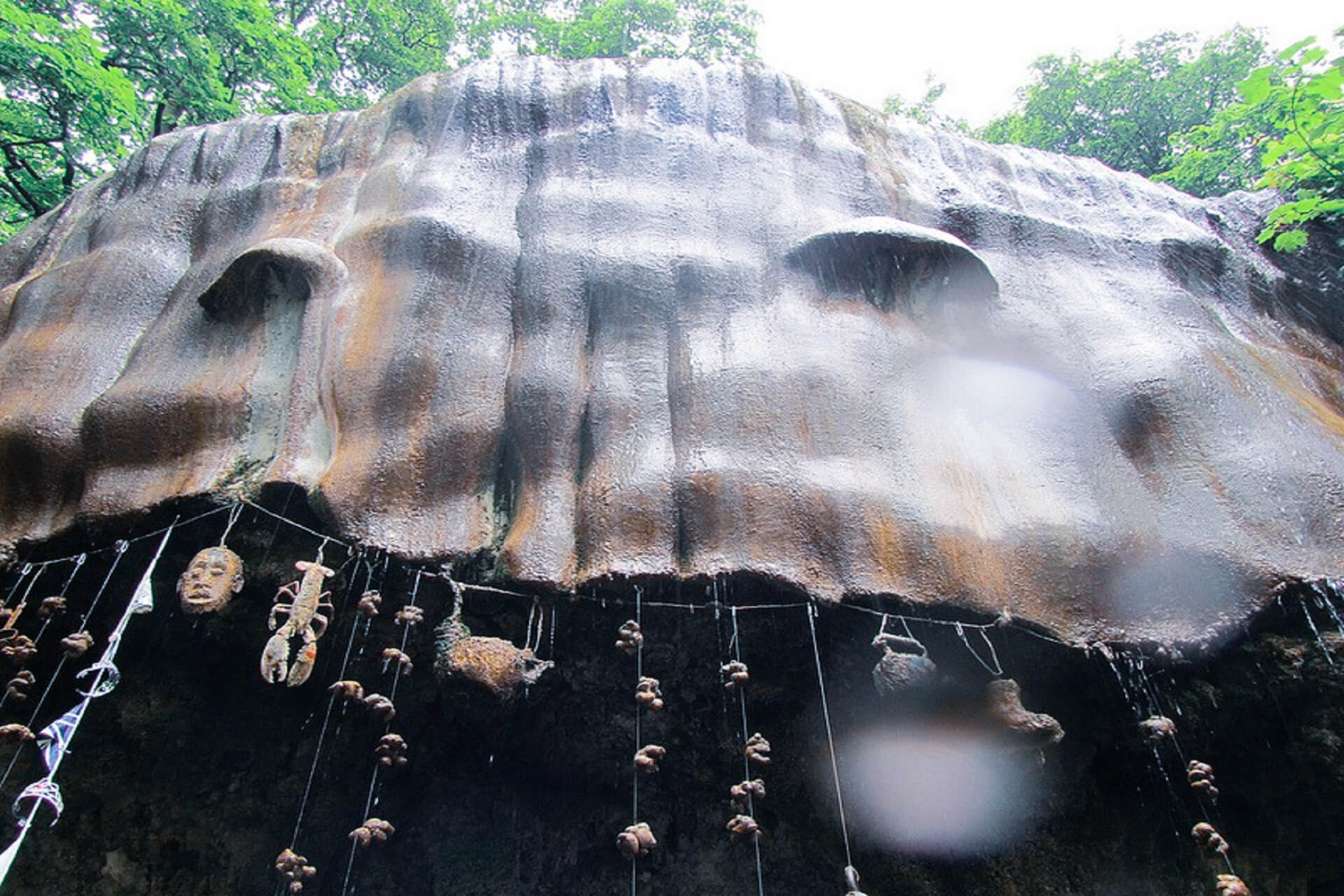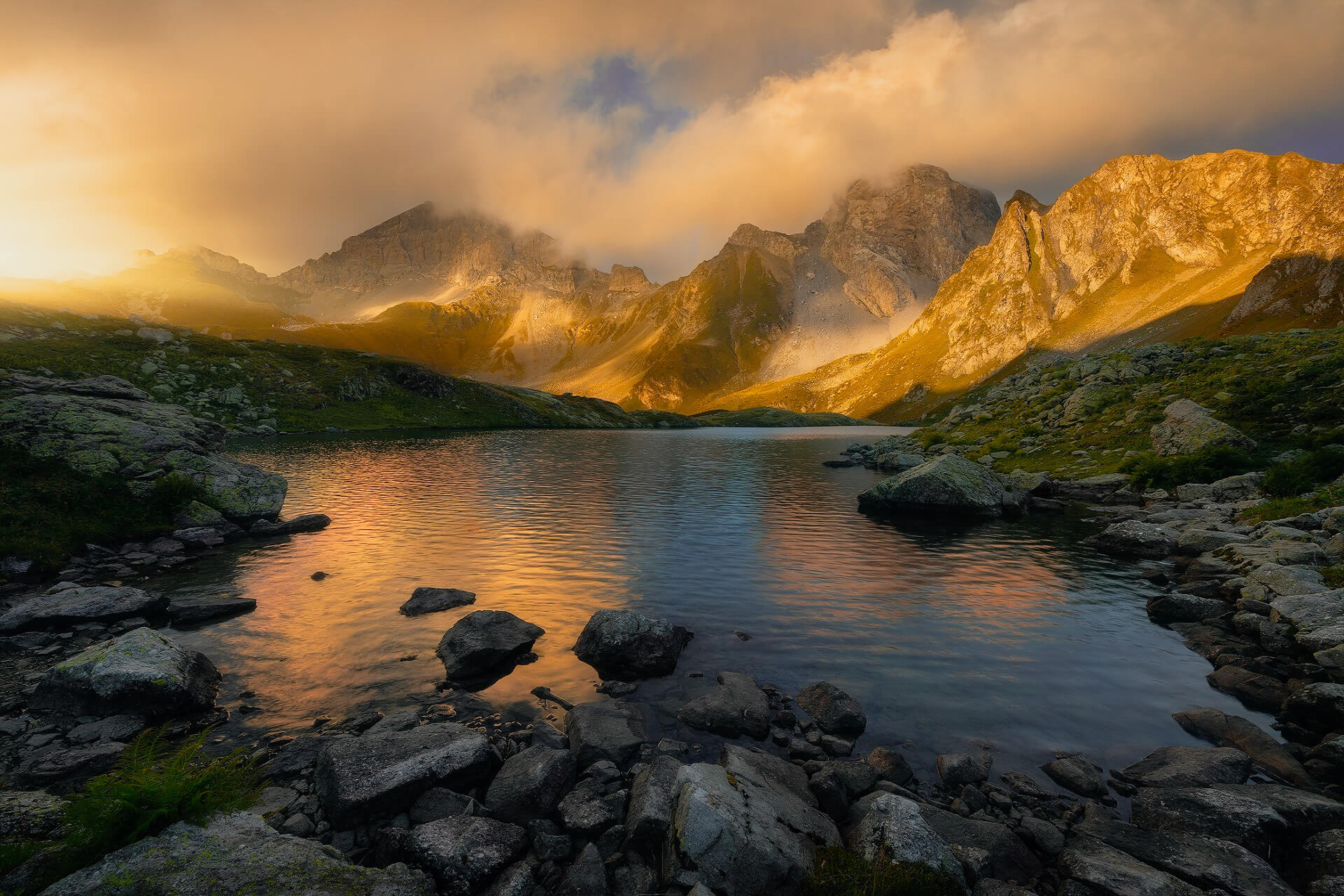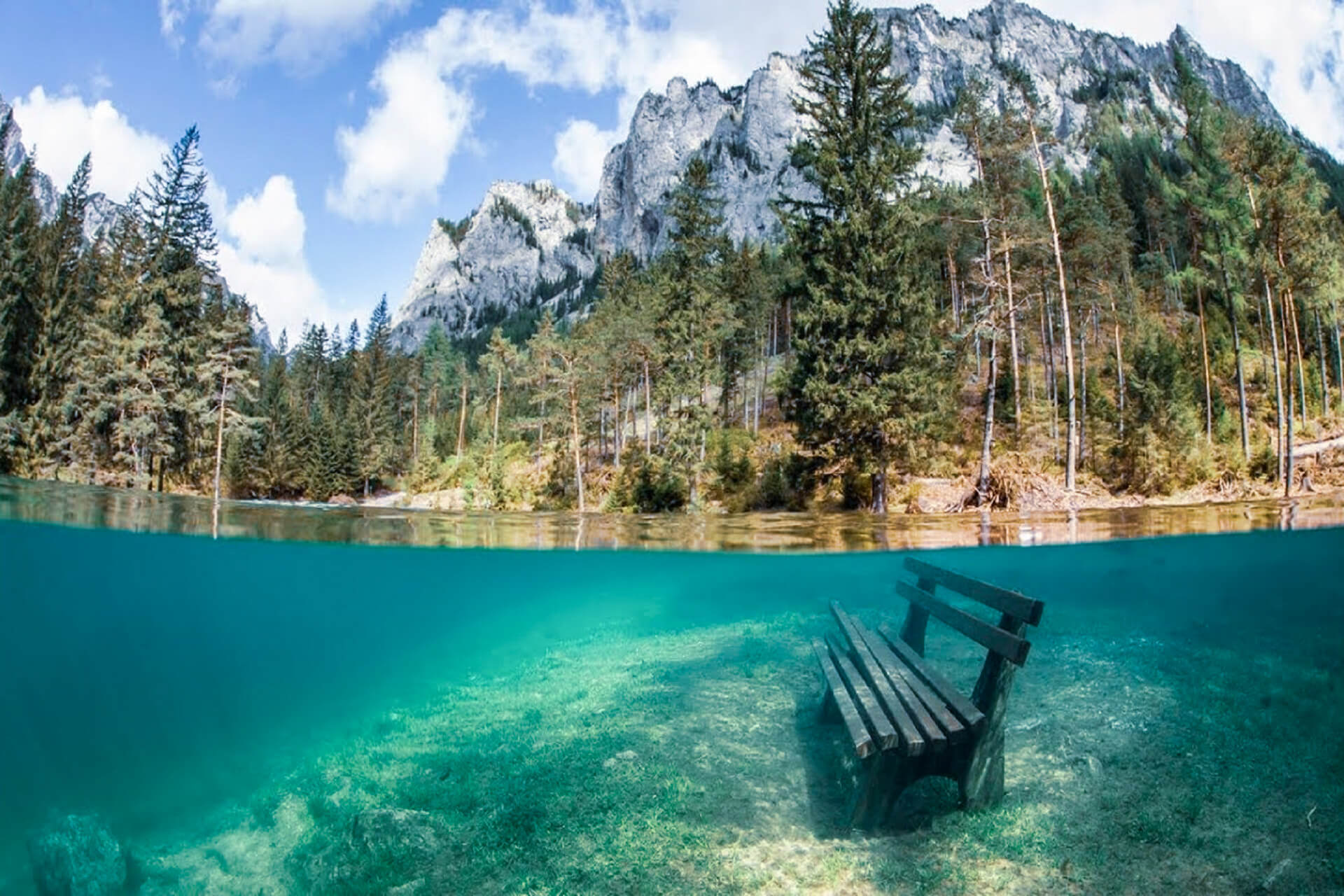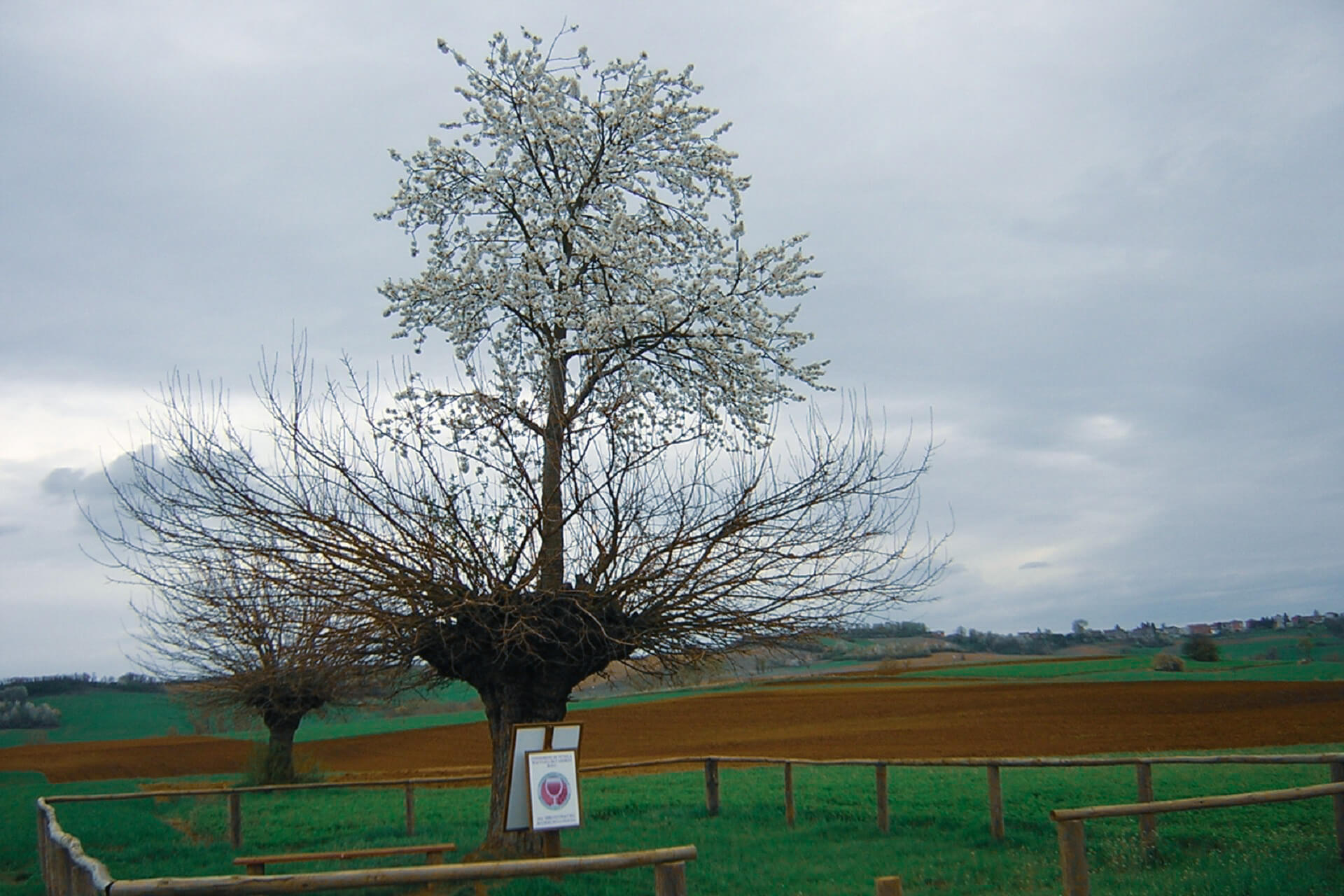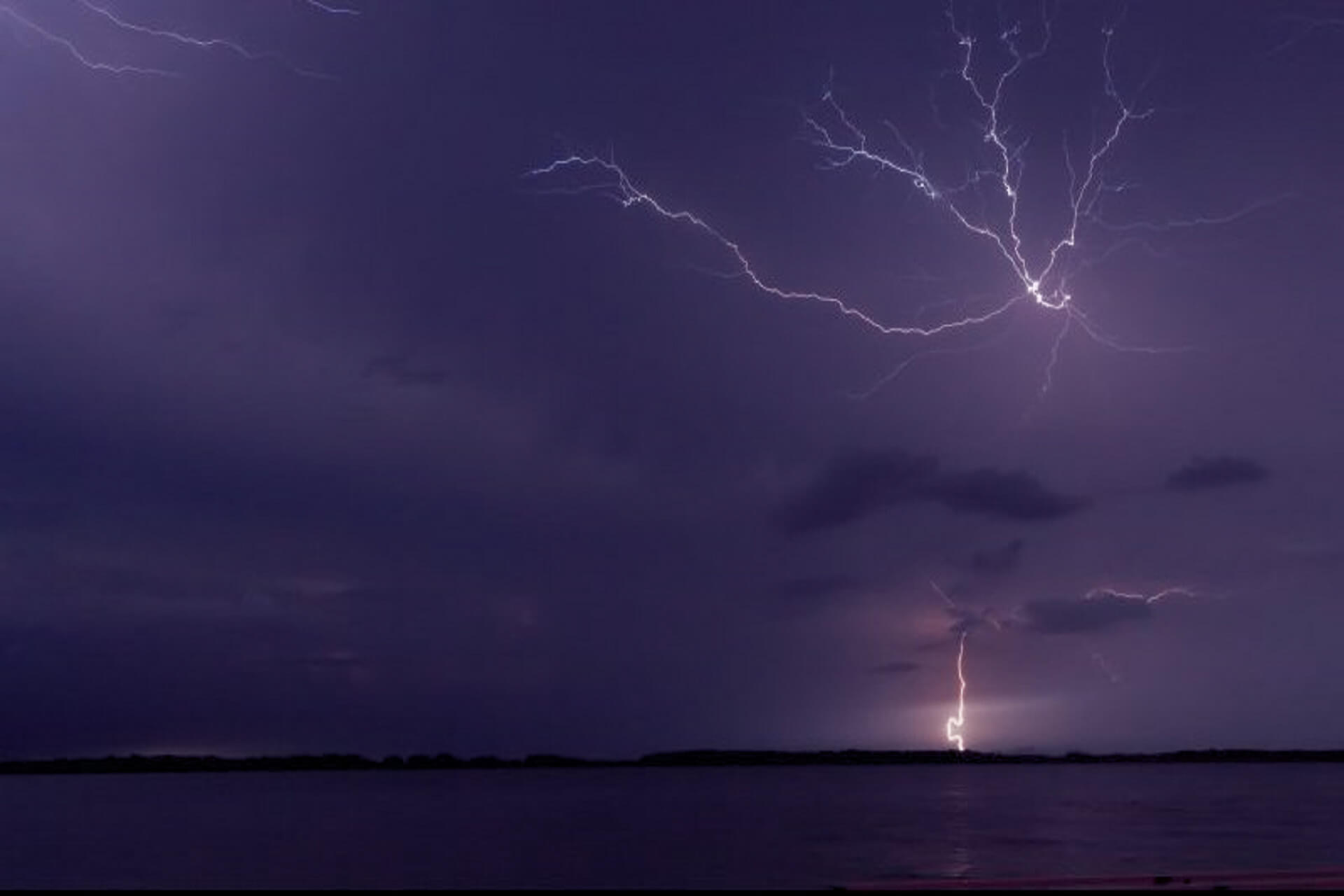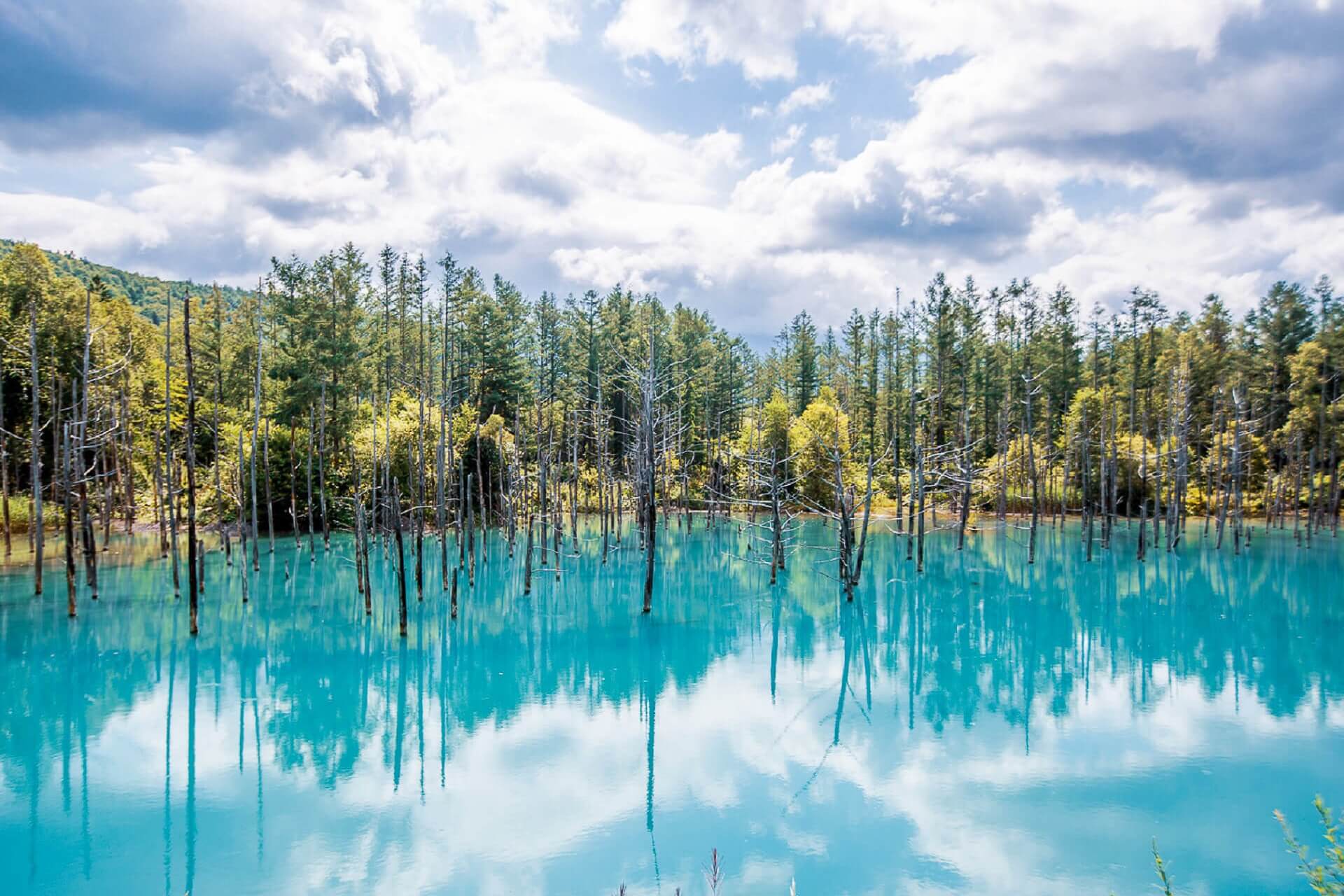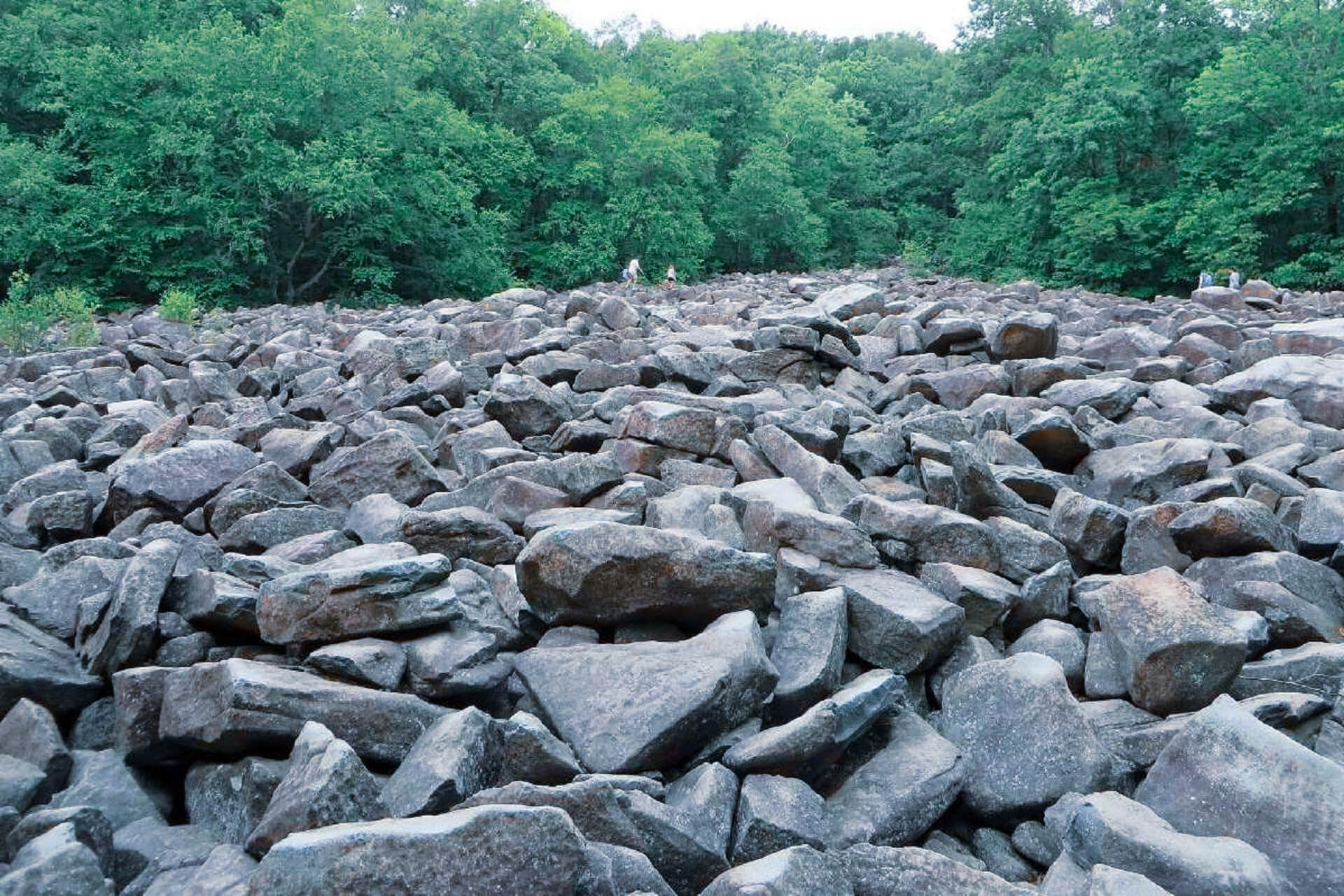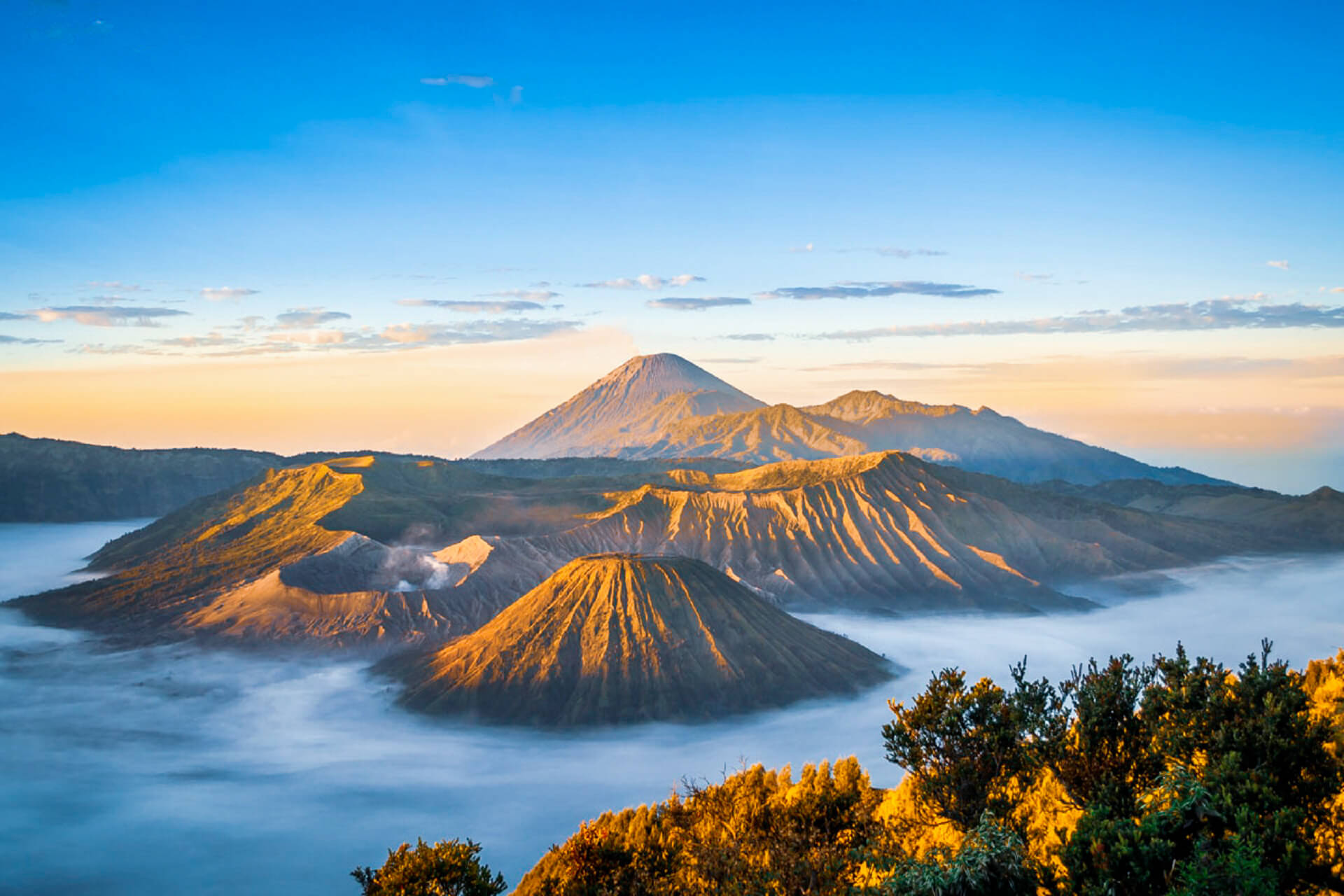These places defy the laws of nature with their existence. For this reason they are an unsolved mystery for scientists and researchers.
Shanay-Timpishka
Shanay-Timpishka, the legendary Boiling River, is in the midst of the Amazon jungle, befuddling scientists and adventurers alike. This natural wonder, nestled in the beautiful Peruvian countryside, hides a captivating secret that has captivated residents and adventurers for ages.
A mixture of excitement and dread pervades the air as one goes on the quest to discover the secrets of Shanay-Timpishka. The temptation of seeing a river boiling passionately in the middle of a peaceful forest setting entices the curious. The adventurer’s trek takes them through deep woodland and across meandering streams, gradually taking them to the baffling spectacle.
At first glance, the Shanay-Timpishka River appears to be just another wild river running through the forest. The increasing steam and palpable heat emerging from its waters, however, reveal the unusual nature of this geological event when one gets closer. While most rivers run with a relaxing coldness, this one defies expectations by displaying an unexplainable temperature rise.
The boiling character of the river is attributed by scientists to geothermal forces lying beneath the Earth’s surface. The region’s geological activity and volcanic geysers all contribute to the soaring temperatures that embellish this watery wonder. Hot mineral-rich waters mix with the river’s flow, creating a hypnotic dance of steam and bubbles.
Aside from its geological uniqueness, Shanay-Timpishka has unrivaled ecological value. The mineral-rich waters that flow through its bed support a distinct ecosystem, encouraging flora and fauna that have evolved to live in harsh environments. Rare plant species that have adapted to the extreme heat dot the riverbanks, while elusive critters live in the warm embrace of the waters, beyond the reach of conventional exploration.
Shanay-Timpishka has been woven into the fabric of indigenous culture as an intrinsic aspect of local myths and folklore. The boiling waters were revered and feared by ancient tribes that lived along the river’s flow, and were often seen as a sacred embodiment of the Earth’s raw force. Mystical stories of spirits guarding the river and whispered warnings of its potentially dangerous nature have been passed down through generations.
The delicate equilibrium of this natural wonder necessitates rigorous conservation measures. Environmentalists and local governments work together to conserve the integrity of Shanay-Timpishka and its unique ecology. With limited public access, managed eco-tourism aims to provide tourists with an unforgettable experience while maintaining the river’s natural beauty.
Shanay-Timpishka is an awe-inspiring tribute to the Earth’s unfathomable mysteries in the domain of incomprehensible miracles. This Peruvian gem welcomes intrepid people to join in its enchantment with its scorching waters, intriguing stories, and natural wonders.
Movile Cave
Movile Cave located in Romania has a different atmosphere from Earth. Sulfur predominates in it. The slightest ray of light has not reached the cave for more than five million years, and yet the entire ecosystem has survived in it, which confuses scientists. Researchers have found as many as 33 species in it, which do not exist outside the cave.
Movile Cave is a subterranean treasure hidden deep within Earth’s mysterious terrain. Unbeknownst to many, this enthralling underground paradise is shrouded in endless darkness, shielded from the sun’s dazzling embrace. This cave, hidden beneath the Romanian soil, has an appeal unlike any other, piqueing the interest of daring adventurers and researchers alike.
Movile Cave is not your typical cavern; it has a distinct ecosystem that demonstrates nature’s adaptation and tenacity. The air within the cave is eerily distinct, heavy with mystery, and dense with secrets. The atmosphere is pervaded by a delicate mix of gases, generating an uncanny but lovely aura that is difficult to fathom. It’s as if the cave itself is a repository of lost knowledge, whispering forgotten tales to those who dare to listen.
Venturing into the depths of Movile Cave would bring one face to face with a plethora of amazing species, each specifically designed to thrive in the constant darkness. Rare and fascinating organisms among these eyeless inhabitants are chemosynthetic bacteria, which use chemosynthesis to turn sulfur and ammonia into food. Surprisingly, this life-sustaining activity is not dependent on sunshine, demonstrating the inventiveness of life in harsh settings.
The cave’s unusual wildlife includes the “Movile Cave scorpion” (Bihoreau terestris), a remarkable tribute to survival in adversity. Through evolutionary pressures, this intriguing arachnid has lost its sight organs, relying on other senses to navigate this lightless domain.
The brave explorers can’t help but feel awe and humility as they navigate the cave’s maze-like corridors. They are reminded of the interdependence of life, the resilience of nature, and the immensity of Earth’s unexplored territories with each stride. It’s a dramatic contrast to the world above, where sunlight reigns supreme and life follows a distinct set of rules.
Movile Cave’s significance stretches far beyond its dark depths. Scientists are studying this deep environment with zeal, drawing analogies to hypothetical extraterrestrial life on faraway moons and planets where light does not exist. It provides a glimpse into the possibilities of persistence and flexibility in the face of seemingly insurmountable problems in life.
Movile Cave is a tribute to nature’s beauty and the mysterious wonders that lie beneath our feet. It’s a quiet reminder that there’s always more to discover and explore, even in locations we think we know best.
Cursed water rock
North Yorkshire, an area of exquisite beauty filled with stunning landscapes and tiny villages, is home to a mystery that has enthralled locals and adventurers for centuries: the intriguing Cursed Water Rock. This geological wonder, nestled deep inside the folds of the lush moorlands, exudes a sense of mystery that has captivated many visitors.
Cursed Water Rock, also known locally as Aqua Maledicta Lapis, is a rare geological structure that has long been associated with strange occurrences and terrifying folklore. This rock formation, standing proudly amidst the harsh environment, appears to emit a strange attraction that defies reasonable explanation.
This rock is unique in that it is said to create an eerie radiance when touched by dewdrops or precipitation during the twilight hours. According to local legend, this phenomena is the result of a curse cast on the rock ages ago by an enraged witch. The sorceress, according to mythology, desired vengeance for an ancient injustice, and her wicked incantations imbued the rock with supernatural energy.
Visitors who dare to approach the Cursed Water Rock report feeling unexplainable shivers down their spines, as if an unseen presence was watching their every move. Some claim to have heard tiny whispers carried on the wind, while others claim to have felt cold, ghostly hands touch their skin.
Geologists and scientists continue to be fascinated by the geological composition of the rock itself. The Cursed Water Rock is mostly composed of schist, a metamorphic rock with characteristic foliation, and it has an extensive network of mineral crystals that may be responsible for its mesmerizing luminosity. Attempts to study the rock, however, have yielded ambiguous results, leaving the riddle unsolved.
Various paranormal investigators and aficionados have attempted to decipher the mysteries of the Cursed Water Rock over the years. Many people have kept nocturnal vigils in the hopes of seeing the rock’s spectral glow. While some claim success, skeptics regard such claims as figments of the imagination.
Despite the legends and mysterious events that surround the Cursed Water Rock, its fascination endures. It acts as a beacon, attracting both the curious and the wary, all wanting to experience the incomprehensible and immerse themselves in North Yorkshire’s enchanting surroundings.
So, if you happen to be walking across the North Yorkshire moors, keep an eye out for the Cursed Water Rock. Its cryptic mystique will make an indelible impression on you, whether you believe in curses or simply enjoy the mystery of the unknown.
Lake Karachay
Lake Karachay is a contradictory wonder located in the middle of Russia. While its name may conjure up visions of serenity, this lake is anything but. This body of water, hidden among the stunning scenery of the Ural Mountains, contains a deadly secret that makes it one of the most dangerous places on Earth.
Lake Karachay is a haunting reminder of the Soviet era’s grim legacy. It served as a storage for one of the most lethal substances known to mankind during the mid-twentieth century – radioactive waste. The neighboring Mayak Production Association, a secretive nuclear complex, was in charge of dumping massive volumes of very poisonous materials into the lake. This risky behavior continued for decades, resulting in disastrous repercussions.
The lake’s unsettling fascination is hidden behind its ordinary exterior. The tranquil waters glisten in the sunlight, complementing the lovely scenery that surrounds it. The surface appears to invite visitors, enticing them to explore its peaceful depths. However, underlying this beautiful exterior lies a dangerous truth that can only be understood by diving into its history.
The terrible reality of Lake Karachay becomes clear as you go closer to the shore. The beautiful color of the water conceals the wicked energy within. Even a brief exposure to its radioactive waters might kill any living being. In fact, even a few minutes spent near the lake without protection would expose you to a deadly dosage of radiation. Because of its toxicity, it has earned the dreaded moniker “The World’s Most Polluted Body of Water.”
The aftereffects of Lake Karachay’s toxic past can still be seen today. The surrounding area is still uninhabitable, and visitors are advised to keep a safe distance. The lake is a stark reminder of the hazards of unregulated human activity and its long-term environmental consequences.
Efforts have been made in recent years to alleviate the threats posed by Lake Karachay. Plans have been put in place to contain and isolate the radioactive material, preventing it from polluting the environment further. Cleanup projects try to make the area safer for future generations, but the legacy of previous neglect will live on forever.
Lake Karachay serves as a harsh warning that danger lurks in the shadows even in the most lovely places. The cautionary tale of this once-pristine lake reminds us to tread gently on this precious planet we call home, to conserve and safeguard nature’s beauty, and to learn from past mistakes.
Lake Karachay is an enigma, disguising its terrible past behind a lovely exterior. Its once-beautiful waterways are now a somber reminder of the repercussions of human foolishness.
Grüner See
The fascinating Grüner See, nestled deep within the enchanted embrace of Austria’s Tragöß Valley, is a natural wonder that beckons travelers with its ethereal beauty. This beautiful, emerald-green lake is a pleasure to behold, creating visions of a bizarre, dreamlike scene that enchants all who visit.
The Grüner See undergoes a stunning transition with each passing season, a ballet orchestrated by nature itself. As the snow-capped Hochschwab Mountains thaw in the spring, the lake undergoes a dramatic rebirth. The neighboring meadows, covered with a plethora of beautiful wildflowers, elegantly bow in honor of this magnificent display.
Grüner See is a remarkable natural wonder, receiving its name from the stunning emerald color of its extraordinarily pure waters. Under the water’s surface, an amazing world awaits scuba divers from all over the world. When spring blooms, the water levels rise, drowning benches, bridges, and even sections of the surrounding forest beneath its translucent depths. Dive into this underwater realm and you’ll be transported to an enchanted otherworld where sunbeams permeate the water, illuminating the submerged trees and creating a rainbow of hues.
As summer brings warmth to the region, the Grüner See recedes once more, revealing a stunning emerald meadow. As divers and hikers foot atop the once-submerged ground, observing nature’s harmonic exchange between two different realms, this unique event reveals a panorama unseen anyplace else on Earth.
Grüner See is a haven for a variety of aquatic animals, some of which are rarely found in other lakes of freshwater. Divers may come upon the elusive Alpine salamander or the vivid European pond turtle as they glide through the glistening waters. Such interactions serve as a sobering reminder of the fragile balance and biodiversity that nature jealously guards within its nooks and crannies.
Autumn paints the valley in warm, golden colours, and the Grüner See undergoes yet another transition. The water recedes, restoring the parkland to its lush, green splendour, and the echoes of the summer’s ethereal display linger in the minds of those who saw it.
The Grüner See lies asleep beneath the ice clutch of the Hochschwab Mountains in the calm embrace of winter. Nature’s masterpiece remains dormant, yet its splendor awaits the embrace of spring.
Grüner See is an invitation to immerse oneself in the spectacular grandeur of Austria’s Alpine wonderland for intrepid tourists, nature enthusiasts, and wanderers seeking a glimpse of heaven on Earth. It’s a location where imaginations meet reality, colors defy expectations, and each season reveals a new chapter in the lake’s story.
Cherry tree in Piedmont
A hidden jewel hides among the stunning Piedmont landscapes: the lovely Cherry Tree. This arboreal masterpiece, standing tall and proud, charms the rich regions, giving a symphony of hues and scents that excite the senses.
Piedmont, famous for its magnificent vineyards and wonderful cuisine, also has some of the most beautiful cherry orchards. Among these, the Piedmont Cherry Tree is a symbol of nature’s abundance and the region’s agricultural legacy. Its alluring attraction draws people from all around, seducing them with the promise of a sensory journey unlike any other.
The Cherry Tree adorns itself with a magnificent gown of delicate blossoms in the spring, emanating an ethereal appeal that charms the area. Delicate petals in ivory and blush flutter in the breeze, bringing a sense of calm and regeneration to the beholder.
Summer is when the Cherry Tree truly shines, with clusters of luscious cherries blooming in scarlet and garnet colours. These big, delicious fruits are a tribute to the thorough attention and nurturing that occurs throughout the year.
The Cherry Tree changes into an appealing shape as the sun sets over Piedmont’s rolling hills, giving a warm warmth on the landscape. It retains a mystique under the moon’s soft light, inviting admiration and amazement.
Autumn provides a change of scenery, as the Cherry Tree transforms into a vibrant tapestry of red, orange, and gold. Visitors are captivated by the foliage transformation, which creates an idyllic setting for leisurely strolls and peaceful contemplation.
Harvest season, a joyous occasion celebrated with zeal, symbolizes the end of the Cherry Tree’s voyage. Families and friends gather under the boughs, laughing and plucking the luscious cherries. The perfume of freshly picked cherries permeates the air, leaving an unforgettable imprint on the memory.
Piedmont, a location of remarkable terroir, plays an important role in maturing these delicate fruits. The region’s distinctive microclimate, with its distinct seasons, creates excellent circumstances for the Cherry Tree to thrive and develop.
The cherries grown on the Piedmont Cherry Tree are recognized for their outstanding flavor and flexibility. The choices are as varied as the imagination, ranging from decadent cherry pies and luxurious preserves to craft liqueurs and savory sauces.
The Piedmont Cherry Tree is more than just a fruit-bearing tree; it is a tribute to the region’s cultural legacy, a symbol of the balance between human achievement and nature’s bounty. Its presence represents the richness of life, the delight of the senses, and the inextricable link between people and the area they call home. So, if you ever find yourself in the charming Piedmont region, make sure to experience the timeless beauty and juicy delights of the Cherry Tree – a true natural wonder.
Maracaibo’s Lighthouse
The Maracaibo Lighthouse, located in the middle of Venezuela’s busy metropolis of Maracaibo, has captivated inhabitants and visitors for years. This famous building is a symbol of resilience and historic significance, not merely a beacon of light guiding mariners through the hazardous waters of Lake Maracaibo.
The Lighthouse of Maracaibo stands far above the cityscape, proudly showing its neo-gothic elegance. This majestic 52-meter-tall sentinel offers a breathtaking panoramic perspective of the city and the great expanse of Lake Maracaibo beyond. Built in the late 1800s, the lighthouse has witnessed the city’s transformation from a sleepy fishing village to the bustling metropolis it is today.
Maracaibo’s Lighthouse was designed by visionary architect Rafael Urdaneta and features a blend of neo-gothic and eclectic architectural styles. The elaborate craftsmanship on its exterior, which is embellished with gargoyles and spires, provides a magical touch to the edifice. As night falls, the lighthouse comes to life with spectacular lights that create a mesmerizing display while casting a warm glow over the surrounding waters.
The principal function of the Maracaibo Lighthouse has always been to direct ships across the complicated network of sandbanks and marshes that make up Lake Maracaibo. Its powerful beam of light illuminates the night skies and provides a safe passage for ships returning to the bustling port. The lighthouse’s importance in preserving marine safety has earned it the respect and thanks of sailors all around the world.
Beyond its functional role, the Lighthouse of Maracaibo serves as a quiet guardian of the region’s rich heritage. It has seen empires grow and fall, wars for independence, and the birth of a nation. Each year, the lighthouse gathers stories and legends that echo through time, adding to its charm and mystique.
The Maracaibo Lighthouse is now a prominent tourist destination, attracting visitors from all over the world. Exploring its spiral stairway is like going on a time machine, as you wonder at the historical antiques and exhibitions that line its walls. The stunning view of the cityscape against the backdrop of the shimmering lake from the summit is an experience that stays with those who visit.
The Lighthouse of Maracaibo is an enduring reminder of the city’s tradition and perseverance. Its light continues to shine not only as a marine guide, but also as a cultural symbol that connects the city’s past, present, and future. As the day gives way to night, the lighthouse stands tall, illuminating the route for all those seeking to discover Maracaibo’s treasures, both on land and over the stunning waters of Lake Maracaibo.
Hokkaido lake
The Hokkaido Lake, located in Japan’s far north, is a compelling natural wonder that draws visitors looking for a break from the hustle and bustle of city life. This lake, embraced by the pristine environment of Hokkaido prefecture, radiates an unearthly appeal that captivates visitors.
Hokkaido, known for its lovely surroundings, has several beautiful lakes, but one stands out as an ethereal gem: Hokkaido Lake. This glacial lake, surrounded by a spectacular circle of snow-capped peaks, is a sparkling sapphire reflecting the ever-changing hues of the sky. Awe-inspiring scenery!
The fresh aroma of pine and the soft rustling of leaves create a symphony of tranquillity as one approaches the Hokkaido lake, enticing visitors to immerse themselves in its attraction. A stroll along the water’s edge reveals the fragile ecosystem that thrives beneath the surface. The secretive Ezo salamander, an amphibious organism found solely in this region, may be spotted by keen observers.
During the summer, vivid flora decorate the lake’s shoreline, creating a lovely scene. The native pink Ezo-yama-kanzo flowers, which bloom in groups, provide a surreal touch to the surroundings, while the calm waterways reflect this natural spectacle with extraordinary clarity.
A boat cruise allows daring souls to explore the stunning depths of Hokkaido Lake. The magnificence of the surrounding mountains is seen as the boat glides on the calm surface, and a sense of wonder fills the heart.
The true beauty of this beautiful lake is shown during the winter months, when the area is clothed in a heavenly white. Hokkaido Lake freezes over, forming an enthralling natural ice rink. Fearless ice skaters glide with grace, leaving ephemeral etchings on the crystal-clear surface evocative of exquisite brushstrokes by artists.
The aurora borealis frequently adorns the winter sky, dazzling the frozen terrain in a kaleidoscope of colors. Witnessing this celestial dance of lights over the serene Hokkaido lake is a once-in-a-lifetime experience that will leave you with memories to last a lifetime.
Whether you visit during the spring bloom, the summer heat, or the chilly embrace of winter, Hokkaido Lake is a timeless beauty that exemplifies nature’s splendor. A tranquil retreat that revitalizes the soul and inspires a deep appreciation for our world’s beauty.
Unusual stones in Pennsylvania
Pennsylvania, a state rich in history and natural wonders, also has a unique collection of uncommon stones just waiting to be discovered. These mysterious geological formations have long intrigued travelers and scientists alike, bringing them into a world where ancient mysteries meet modern fascination.
One of the most fascinating examples of these odd stones is the well-known “Ringing Rocks Park.” This geological wonder in Bucks County is notable for its unusual aural feature. A lovely chime-like sound reverberates through the air as tourists pound these rocks with hammers. Geologists ascribe this phenomena to the existence of sonorous rocks, an unusual mineral composition. These fascinating stones have a distinct crystalline structure that emits musical notes when touched, enticing anyone who venture to feel their melodious charm.
The “Presque Isle Conglomerate” is another one of the state’s remarkable stones. This stunning rock structure may be seen in Erie, Pennsylvania. Its stunning colors and intricate patterns of sandstone, pebbles, and quartz weave a mesmerizing tapestry that tells the ancient stories of changing continents and long-gone ages. The Presque Isle Conglomerate has gained its reputation as a treasured geological wonder and a popular photographic subject for geology enthusiasts and photographers alike.
When traveling through Pennsylvania, one cannot escape the appeal of the “Devil’s Potato Patch.” This strange rock formation in the Michaux State Forest got its name from its spooky resemblance to a collection of twisted, unearthly potatoes strewn across the ground. The exfoliation process, in which the rock’s exterior layers peel away, molded these compelling designs, lending an air of mystery to the already beguiling odd stones.
The “Hidden River Caves” in southern Pennsylvania guarantee a fascinating adventure for those with an adventurous attitude. These caves, carved through limestone over millions of years, reveal a fascinating underground world. Stalactites and stalagmites, produced by the slow deposition of mineral-rich water, provide a fantastic landscape that transports visitors through time.
Many more remarkable stones await exploration and admiration in Pennsylvania’s terrain. Each of these geological wonders, from the “Balanced Rock” at Hickory Run State Park to the “Petrified Forest” in Tuscarora State Forest, tells a story that connects us to the Earth’s past and timeless beauty.
Kawah Ijen
The Kawah Ijen is a mesmerizing beauty that is both awe-inspiring and mysterious in Indonesia’s stunning archipelago, tucked within the lush landscapes of East Java.
The magnificent turquoise-blue crater lake at the heart of Kawah Ijen is the result of extreme acidity and the presence of dissolved metals. This crater lake is nothing short of a volcanic symphony—a natural orchestra where acidic waters blend with solfatara eruptions that spew sulfuric fumes into the atmosphere. The sight of sulfurous fumes forming ethereal blue flames dancing on the surface of the lake during the dark hours is nothing short of surreal—a sight that will live on in one’s memory for the rest of one’s life.
The fascination of Kawah Ijen extends beyond its scenic splendor. The region is also well-known for its sulfur mining operations, which have been going on for generations. Miners work ceaselessly to collect sulfur from the depths of the earth, armed only with minimal tools and enormous bravery. The breathtaking descent down the volcano’s steep slopes, through clouds of sulfuric smoke, is a difficult pursuit that represents the indomitable spirit of human struggle.
As darkness falls on the volcano, another spectacular sight awaits: the uncommon and amazing “Blue Fire” phenomena. As night falls, the crater comes to life with an otherworldly blue glow generated by the burning of sulfuric vapors. Witnessing this bizarre natural light show against the deep darkness of the night is a spellbinding experience.
Kawah Ijen is not only a geological wonder, but also a haven for diverse wildlife. The surrounding area is home to a rich assortment of flora and fauna that have adapted to the harsh volcanic terrain. The lush foliage of the adjacent woodlands gives shelter for a variety of bird species, and the elusive Macaca fascicularis, or long-tailed macaques, can be seen swinging through the branches.
As more visitors are lured to the appeal of Kawah Ijen, safeguarding its unspoiled beauty becomes increasingly important. Responsible tourism habits, such as staying on approved routes and avoiding single-use plastics, are critical to preserving this natural gem for future generations to enjoy.
Kawah Ijen is a living witness to the wonders of nature. This beautiful phenomenon leaves tourists in awe of its majesty, from the entrancing blue flames to the difficult endeavors of sulfur miners.

